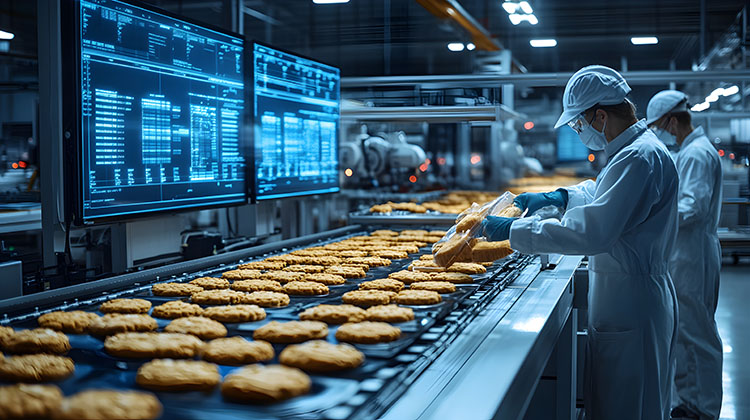
RBS: The sum of all savings
Accurate real-time information and complete process control help baking technology take one more step toward sustainable baking.
Accurate real-time information and complete process control help baking technology take one more step toward sustainable baking.
An entire fleet of iconic crackers built its consumer base on their open, flaky texture, which is produced by layering the dough. Reading Bakery Systems designed a new, 90-degree technology concept for the laminators manufacturing this dough.
Fully automating kneading and mixing is an ambitious endeavor, given the complexity of the process, and the diversity of raw ingredients.
Snacks are diverse and enticing additions to any eating occasion, whether they stand in for an entire meal, or are seen as a treat, a catering option for events, or a movie-night companion. Manufacturers stand to gain by keeping up the pace with innovations in this category. Extrusion provides particularly interesting opportunities.
This increasing interest in better-for-you foods continues to fuel product innovation, including in the sweet bakery market.
Reading Bakery Systems unveiled the new Thomas L. Green Emithermic XE Oven, a superior replacement for traditional Direct Gas Fired (DGF) ovens. This new oven reduces energy and emissions, and simplifies cleaning and maintenance.
How to better meet today’s customer expectations with modified dough processes for baked goods containing rye.
There are clear requirements for the proofing process. The dough may be resting, but its transformation process does nothing but rest. The question is, always, how to improve the process? Technology brings new answers.
Reading Bakery Systems (RBS) recently launched a new multi-pass proofer, designed to be flexible in function, footprint, and form.
Packaging affects the state of the product throughout the supply chain. Identifying the best packaging process and materials ensures all types of baked goods make it from plant to table, exactly as intended.
Technological developments make continuous mixing a better option than batch mixing, especially so for high-volume production. High throughput continuous mixers are becoming the best sellers in this equipment category.
Over the years, advances in continuous mixing have been developed to improve ingredient metering, process controls and include specialized mixer designs and ultra-high capacity mixers. Compared to batch mixing, such technological developments make continuous mixing a better option than batch mixing, especially so for high-volume production.

